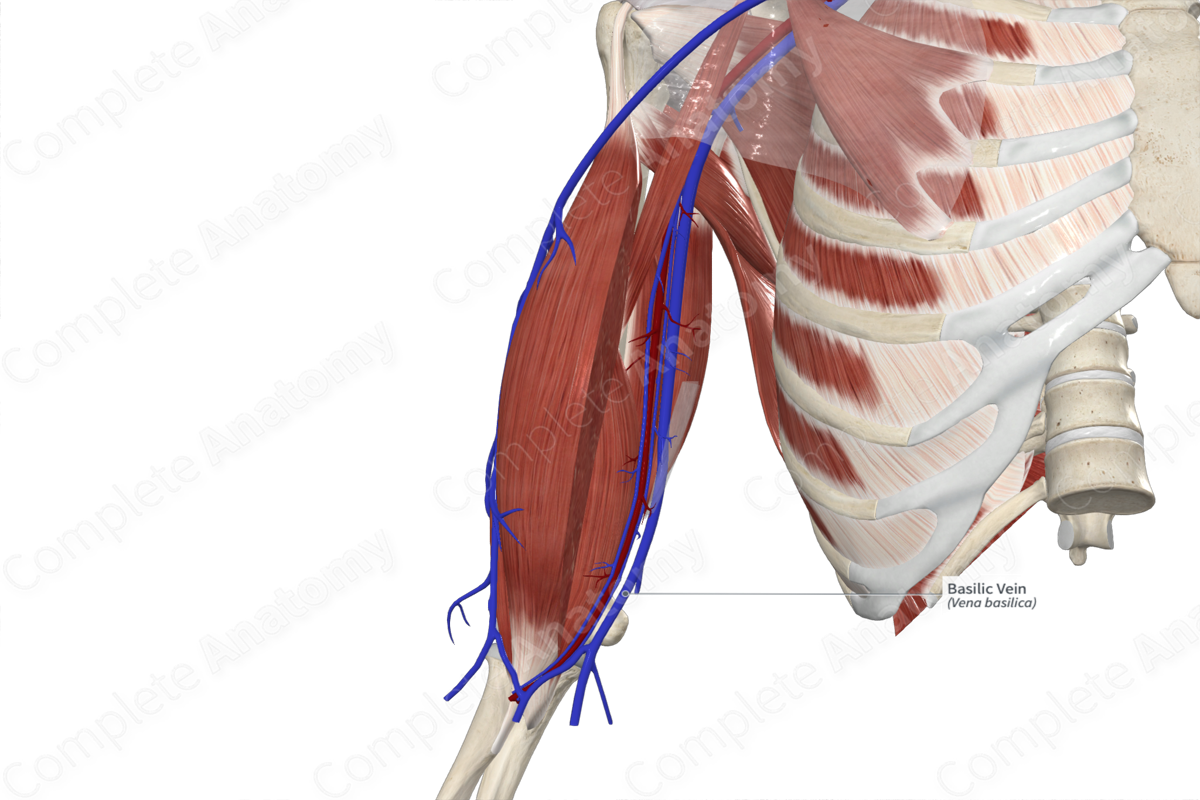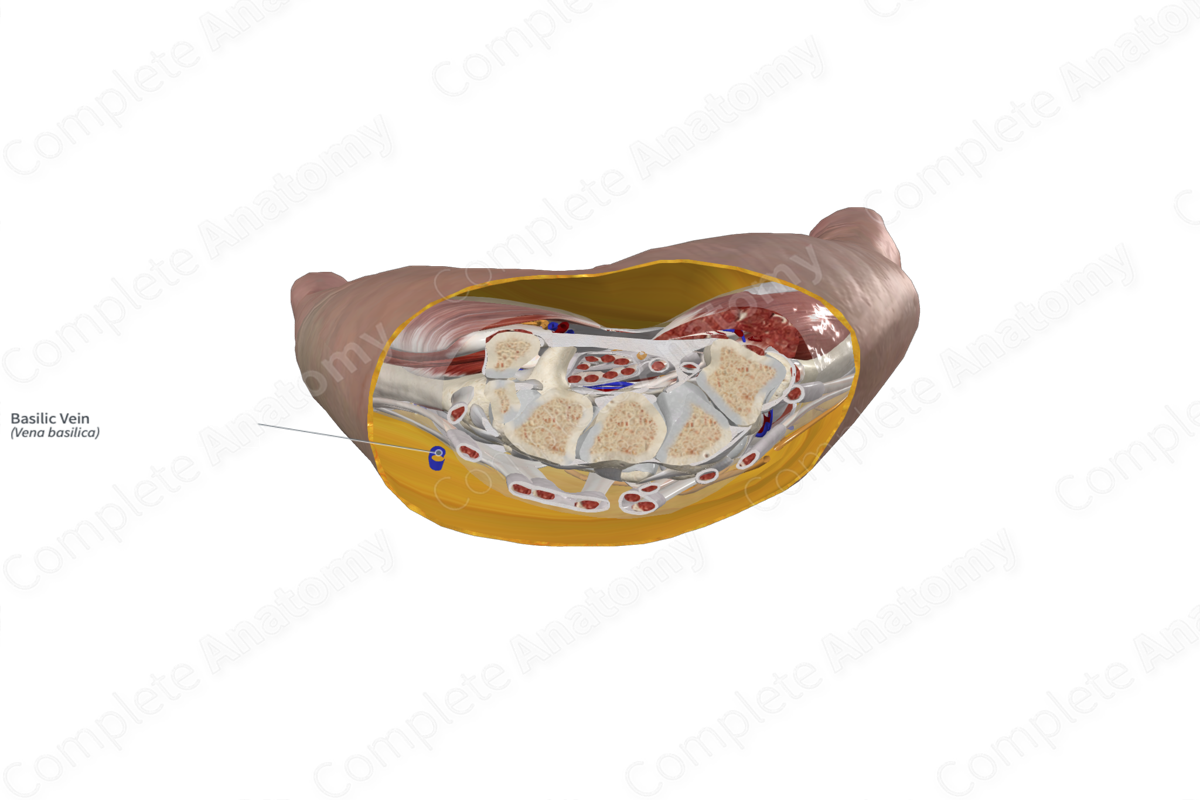
Quick Facts
Origin: Medial aspect dorsal venous network.
Course: Superiorly along medial aspect of forearm and arm.
Tributaries: Median cubital and median antebrachial veins, branches from deep veins of the forearm.
Drainage: Hand, forearm, and arm.
Origin
The basilic vein forms from the dorsal venous network at the ulnar aspect of the dorsal hand. The basilic vein is larger than the cephalic vein (Tubbs et al., 2016).
Course
The basilic vein runs proximally from the dorsal aspect of the hand, along the medial border of the forearm. As it approaches the elbow, it becomes anteriorly placed on the forearm.
In the arm, it ascends posterior to the biceps brachii muscle, alongside the anterior and posterior components of the medial cutaneous nerve (Standring, 2016). It pierces the brachial fascia in the middle one third of the arm and drains into the brachial veins to form the axillary vein (Tubbs, Shoja and Loukas, 2016).
Tributaries
The basilic vein receives the median cubital and, commonly, the median antebrachial veins (Standring, 2016).
Structures Drained
The basilic vein aids in the venous drainage of the hand, forearm, and arm.
References
Standring, S. (2016) Gray's Anatomy: The Anatomical Basis of Clinical Practice. Gray's Anatomy Series 41 edn.: Elsevier Limited.
Tubbs, R. S., Shoja, M. M. and Loukas, M. (2016) Bergman's Comprehensive Encyclopedia of Human Anatomic Variation. Wiley.
Learn more about this topic from other Elsevier products





